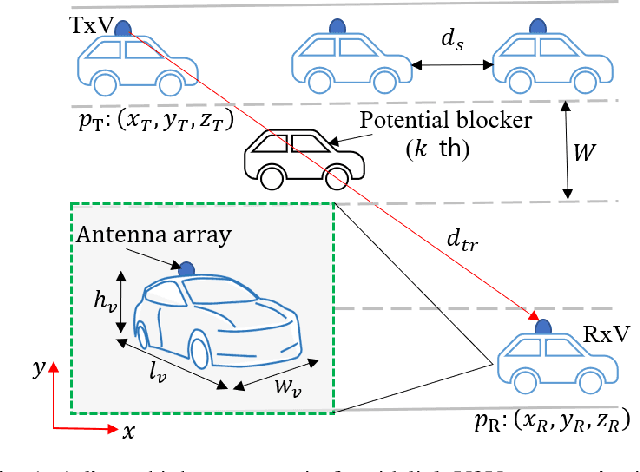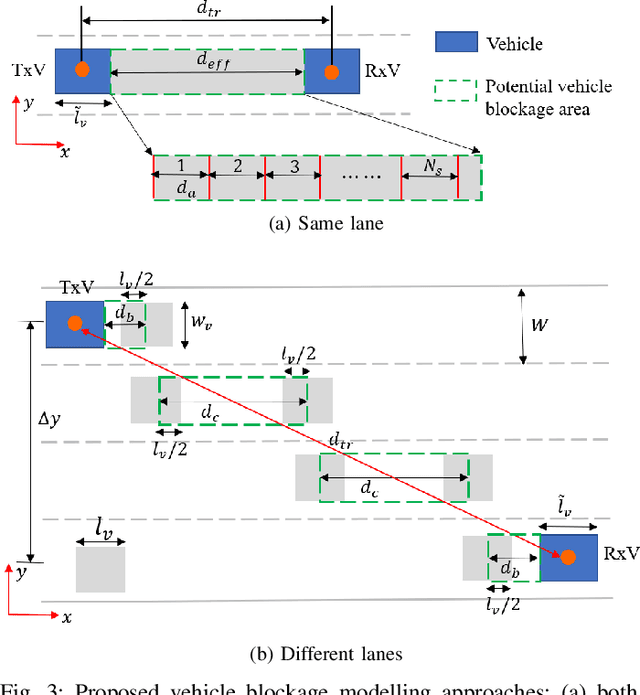Vehicular Blockage Modelling and Performance Analysis for mmWave V2V Communications
Paper and Code
Oct 20, 2021



Vehicle-to-Everything (V2X) communications are revolutionizing the connectivity of transportation systems supporting safe and efficient road mobility. To meet the growing bandwidth eagerness of V2X services, millimeter-wave (e.g., 5G new radio over spectrum 26.50 - 48.20 GHz) and sub-THz (e.g., 120 GHz) frequencies are being investigated for the large available spectrum. Communication at these frequencies requires beam-type connectivity as a solution for the severe path loss attenuation. However, beams can be blocked, with negative consequences for communication reliability. Blockage prediction is necessary and challenging when the blocker is dynamic in high mobility scenarios such as Vehicle-to-Vehicle (V2V). This paper presents an analytical model to derive the unconditional probability of blockage in a highway multi-lane scenario. The proposed model accounts for the traffic density, the 3D dimensions of the vehicles, and the position of the antennas. Moreover, by setting the communication parameters and a target quality of service, it is possible to predict the signal-to-noise ratio distribution and the service probability, which can be used for resource scheduling. Exhaustive numerical results confirm the validity of the proposed model.
 Add to Chrome
Add to Chrome Add to Firefox
Add to Firefox Add to Edge
Add to Edge